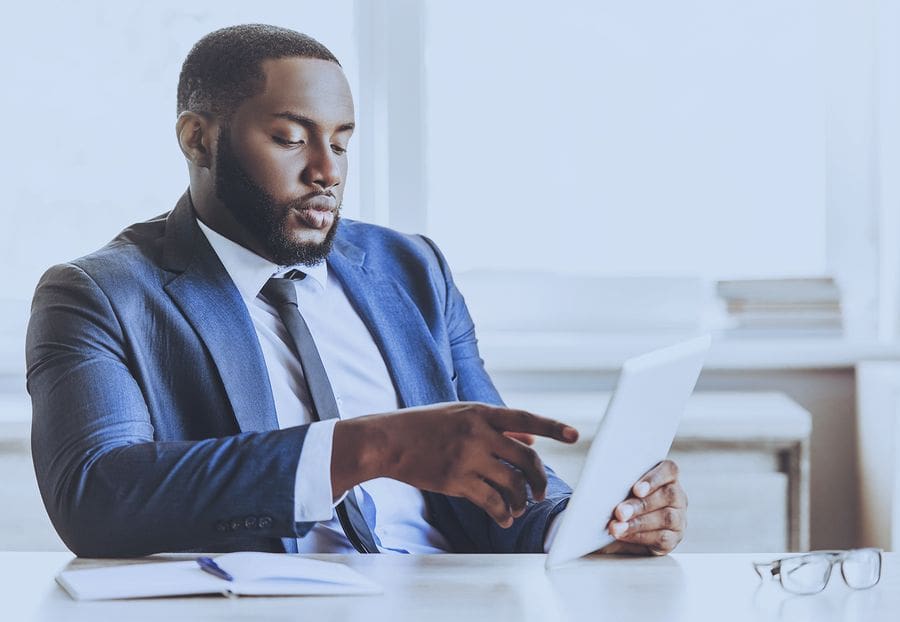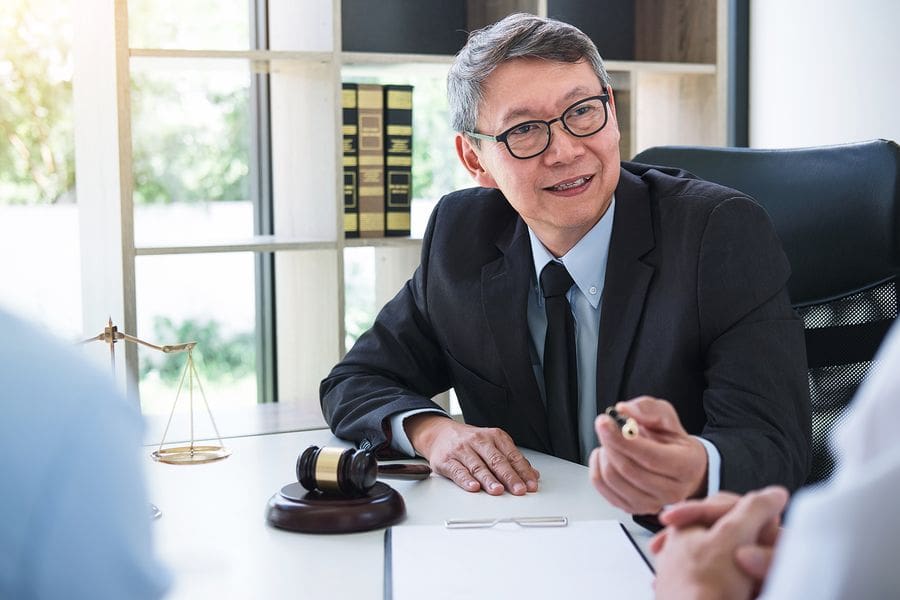
For students going through law school, the appeal of entering a lucrative career can make it easy to put up with an ever-rising student loan balance. But once you leave school, reality hits — and it can be overwhelming.
It’s more expensive than ever to become a lawyer, and it’s not uncommon for graduates to start their careers with $200,000 or more in law school debt. That's not even counting some of the more expensive law schools like Harvard. Even in a field that typically pays six-figure salaries, that’s still a hard pill to swallow.
The sooner you can eliminate your student loan debt, the easier it will be to achieve your other financial and life goals. Here are some ways to get law school loan forgiveness and other assistance, as well as other repayment options to consider if you’re on your own.
Law school loan forgiveness and assistance
If you’re looking for help to pay off your law school student loans, there are several options to consider.
However, it’s important to make a distinction between law school loan forgiveness and assistance. Only your lender can forgive your loans, while an employer or state can offer student loan assistance by making payments on your behalf.
Also, keep in mind that you typically need to commit to a certain career path to qualify for these programs. Here’s what’s available.
Public Service Loan Forgiveness (PSLF)
The Public Service Loan Forgiveness program is available through the Department of Education. To qualify, you need to make 120 qualified payments — they don’t need to be consecutive — on your federal student loans while working for an eligible employer, which includes government agencies and certain non-profit organizations.
Unlike most other programs, there is no limit on the amount of forgiveness that someone can receive from PSLF. Instead, participants will receive forgiveness for all their remaining debt once they've reach the 120-qualifying-payment requirement.
While the idea of getting your full balance forgiven sounds exciting, the PSLF program requires a 10-year commitment to public service employment that may pay less than you could earn in the private sector. What’s more, only federal Direct Loans qualify to be forgiven. However, Perkins and FFEL loans can become eligible by consolidating them into Direct Consolidation Loans.

Department of Justice Attorney Student Loan Repayment Program (ASLRP)
If you work for the Department of Justice for at least three years, you can receive loan assistance of up to $6,000 per year based on payments you’ve made. You need at least $10,000 in federal student loan debt to qualify for this loan repayment assistance program. The maximum assistance you can receive is $60,000.
John R. Justice (JRJ) Grant Program
The JRJ Grant Program is a student loan assistance program available to local, state and federal public defenders, as well as local and state prosecutors. You’ll need to commit to a service obligation of three years as a public defender or prosecutor to qualify. If you meet the requirements, you can receive up to $10,000 per calendar year up to a lifetime maximum of $60,000.
Air Force JAG Student Loan Repayment Program
You can take advantage of this offer by joining the Air Force as a Judge Advocate General (JAG). After completing one year of service as a JAG officer, participants can receive up to $65,000 in student loan repayment over the next three years.
State-based programs
Depending on where you live, your state may offer a loan repayment assistance program (LRAP) to help you pay down your law school debt. Many of these programs are only open to attorneys who provide public interest law services. Gross income limits are common as well.
While not comprehensive, here’s a list of some states that provide LRAPs:
- Arizona
- District of Columbia
- Florida
- Illinois
- Indiana
- Iowa
- Louisiana
- Maine
- Maryland
- Minnesota
- Montana
- New Mexico
- New York
- North Carolina
- Pennsylvania
Note that if your public service job qualifies for PSLF, there's a good chance that you may also qualify for some of the above LRAPs. By applying for both programs, you may be able to receive some repayment assistance in the short term while simultaneously logging qualifying payments towards earning PSLF forgiveness on your remaining balance down the road.
Check out this ABA resource to learn more about which student loan repayment programs are available to you and their eligibility requirements.
School-based programs
There are currently more than 100 law schools that offer LRAPs. See the full list here. Most of the school programs will have income eligibility requirements as well. Note that the program may consider the annual income of your spouse or domestic partner in addition to your own.
The Lewis and Clark Law School LRAP, for example, has an income cap of $65,000 to $70,000. Participants who are married or have domestic partners will be treated as having the higher of their individual income or half of their joint income. You can continue to apply until five years after your graduation but you'll need to re-verify your household income before each disbursement.
Law school loan repayment plan options
Whether or not you qualify for a law school loan forgiveness or assistance program, the Department of Education’s income-driven repayment plans can help you better afford your monthly loan payments.
There are four repayment plans to choose from based on your financial need. Each plan lowers your monthly payment to a certain percentage of your income and extends your repayment term. If you still have a balance after your extended term ends, your remaining balance is forgiven.
Here’s what you can expect from all four plans:
- Pay As You Earn (PAYE) Plan: Your repayment term for undergraduate loans is extended to 20 years, and your monthly payment is typically 10% of your discretionary income. You’ll need to prove financial need to qualify for the PAYE Plan.
- Revised Pay As You Earn (REPAYE) Plan: Your payment will generally be 10% of your discretionary income, and your repayment period will typically be extended to 25 years. Any borrower can apply for the REPAYE Plan.
- Income-Based Repayment (IBR) Plan: IBR changes your monthly payment to 10% or 15% of your discretionary income, and your repayment term will be extended to 20 or 25 years. The actual terms you get depend on when you took out the loan. To qualify, you’ll need to provide evidence of financial need.
- Income-Contingent Repayment (ICR) Plan: The ICR plan is available for all federal loan borrowers. It reduces your monthly payment to the lesser of 20% of your discretionary income or what you’d pay on a plan with a 12-year repayment plan. Your new repayment term will be 25 years.
Keep in mind that income-driven repayment plans are only available for federal loans. If you have private loans, you don’t qualify for these repayment options.
Refinancing law school loans

If you’re not eligible for law school loan forgiveness or assistance and don’t anticipate needing an income-driven repayment plan, you might be able to pay off your student loans faster by refinancing them.
Several student loan refinancing companies offer interest rates that start at a lower level than federal student loans. If you qualify based on your income and credit history, you could lower your interest rate, reduce your monthly payment, or both.
If you have a solid income but a thin credit profile — or vice versa — you can apply with a co-signer to help you improve your chances of scoring a low-interest rate.
Student loan refinancing is done through private lenders. This means it takes a little more legwork than some of the other repayment strategies we’ve discussed. You’ll also need to compare loan options from several lenders to make sure you get the best deal available.
Also, note that if you refinance your federal student loans, you can’t go back. So if you’re considering a law school loan forgiveness or assistance program that requires you to have federal loans, you might be better off sticking with what you have.
You don’t have to do it alone
Navigating the different options for law school forgiveness on your own or with help requires a lot of time and effort. If you feel like you’re too busy to find the right strategy, consider getting help.
Student Loan Planner® can help you by putting together a custom-made plan to help you eliminate your student debt. Depending on your situation, that help can save you both time and money, both of which are valuable commodities in the legal world.
Not sure what to do with your student loans?
Take our 11 question quiz to get a personalized recommendation for 2024 on whether you should pursue PSLF, Biden’s New IDR plan, or refinancing (including the one lender we think could give you the best rate).

Wow! Very impressive list. I will take some time to study these. Thanks.